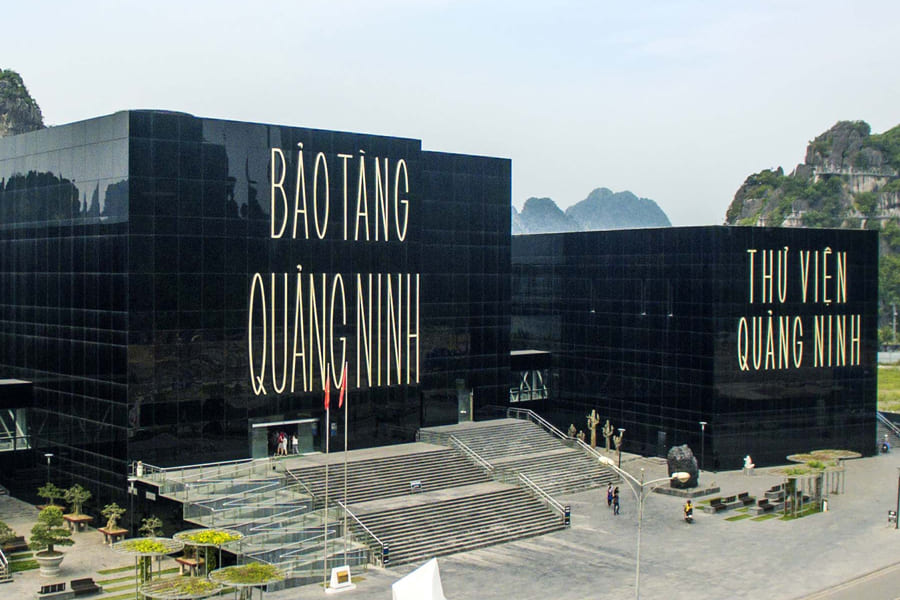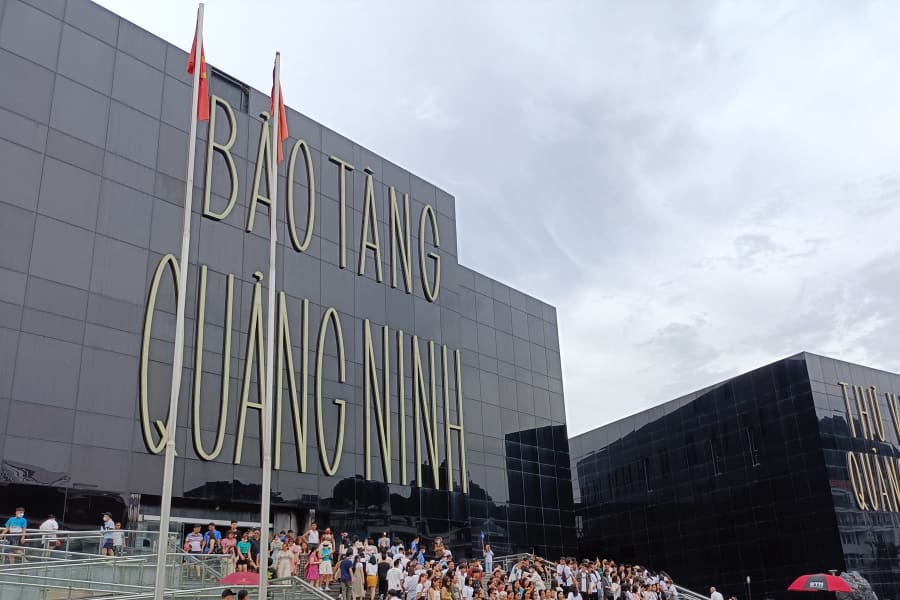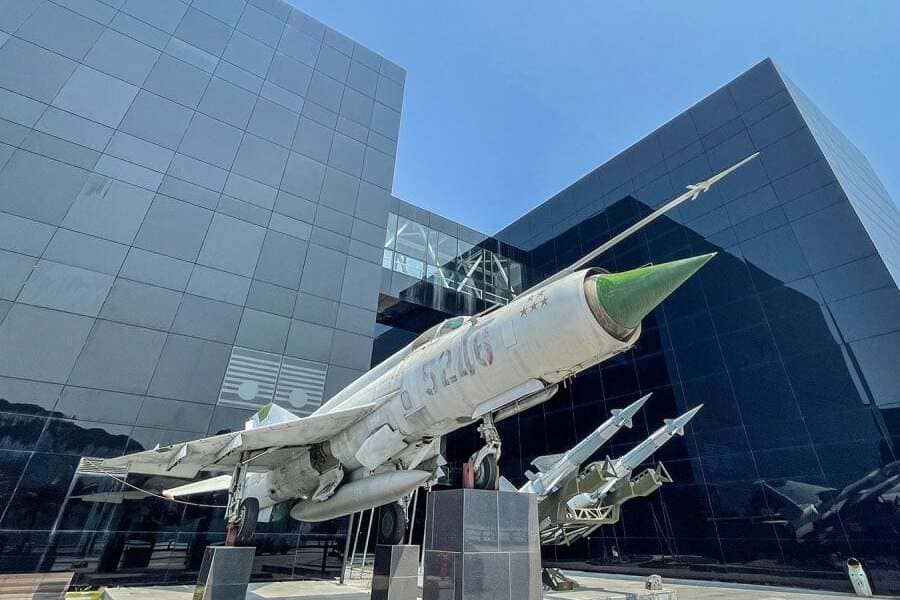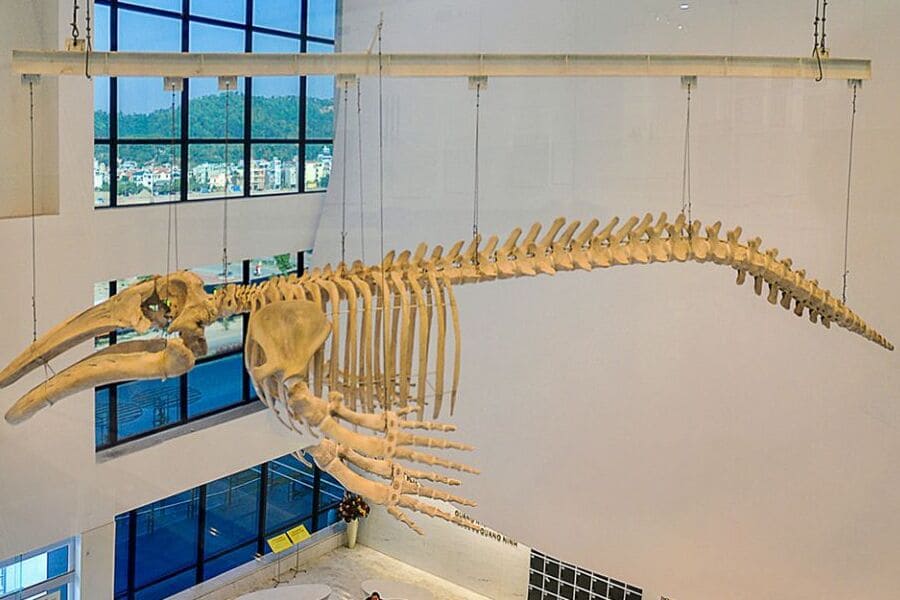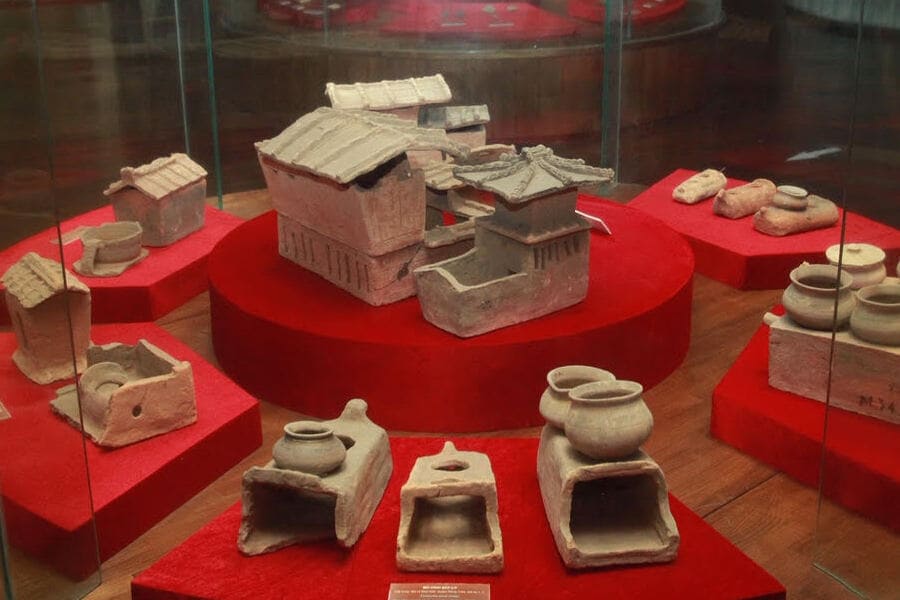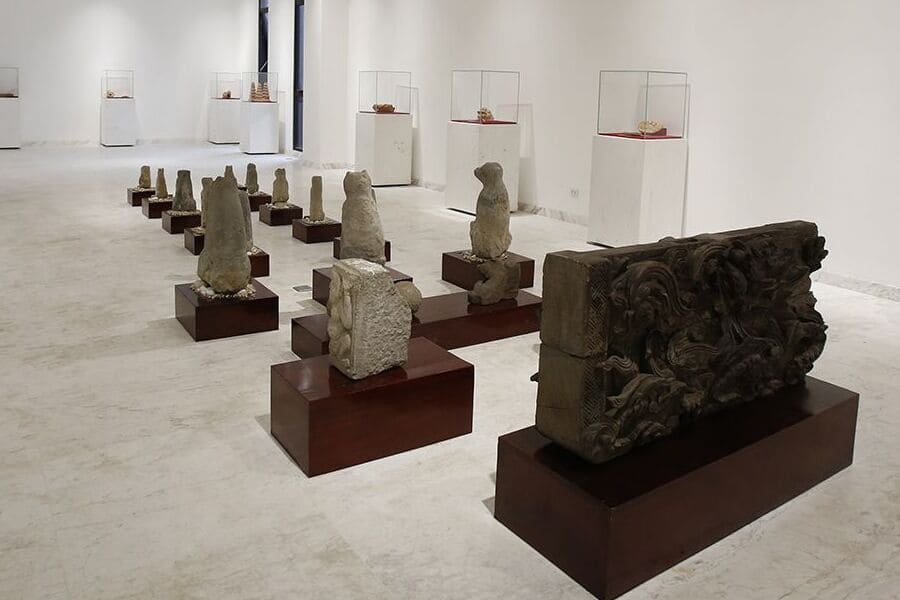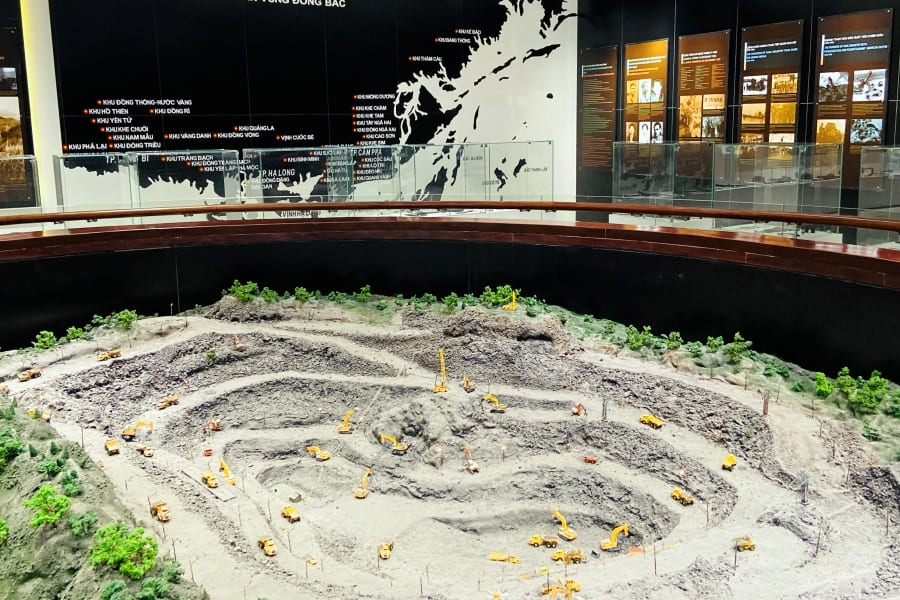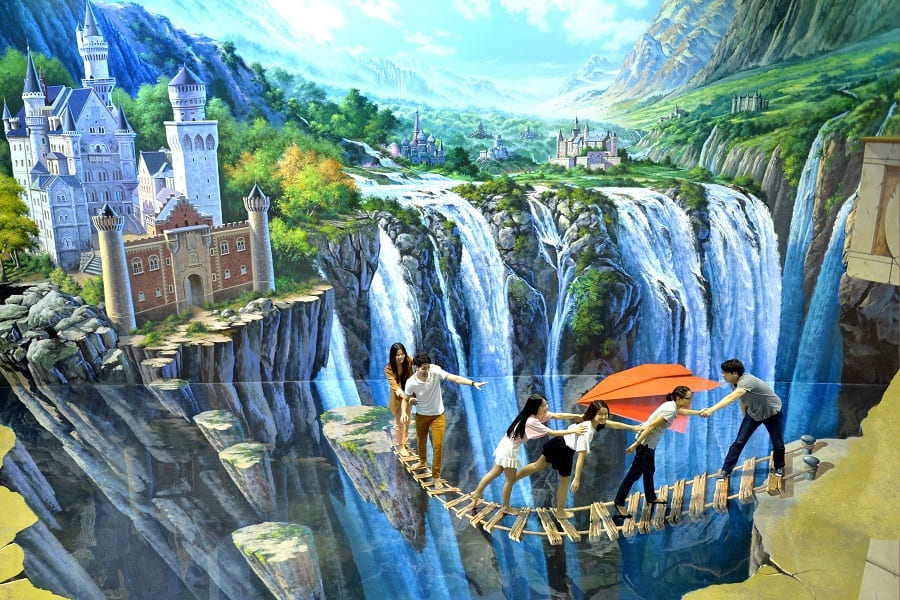Quang Ninh Museum is an attractive tourist destination. Located in Ha Long City, Quang Ninh Province, Vietnam, is an architectural and cultural marvel that draws visitors from all over the world. Since its inauguration in 2013, this museum has become a symbol of the region’s rich history, cultural diversity, and natural beauty. Possessing a modern design, this place makes many visitors excited by its unique and impressive space during your Halong Bay shore excursions journey.
Where Is The Quang Ninh Museum?
Quang Ninh Museum is situated at Tran Quoc Nghien Street, Hong Gai District, Ha Long City, Quang Ninh Province. Located approximately 7.1 kilometers from Ha Long city center, visitors can conveniently reach the museum by private vehicle.
Opening Hours
- Morning: 8:00 AM – 12:00 PM
- Afternoon: 1:00 PM – 5:00 PM
- Open daily
Admission Fees
- Adults: 40,000 VND
- Students: 20,000 VND
- Children: 10,000 VND
Architectural Brilliance
“Simple but luxurious” are the first thoughts when visitors review Quang Ninh Museum. Designed by renowned Spanish architect Salvador Pérez Arroyo, Quang Ninh Museum boasts a striking architectural design that blends seamlessly with its surroundings. The exterior of the museum is characterized by sleek black glass panels, symbolizing the province’s coal mining heritage and mirroring the natural landscapes, particularly the iconic Ha Long Bay. This design not only enhances the museum’s aesthetic appeal but also reflects its commitment to integrating nature and history into a cohesive narrative.
Beyond its allure of black glass, even intricate details such as typography contribute to its striking and captivating appearance. This has established it as one of the most coveted destinations for visitors to Quang Ninh.
Outdoor Display System Of The Museum
The museum’s outdoor exhibit area showcases numerous artifacts and large objects, such as anti-aircraft artillery, rocket launchers, antique cannons, and more. One of the most notable exhibits is the Anthracite coal block, weighing approximately 28 tons, which holds the Guinness Vietnam record as the largest monolithic anthracite block in the country.
Treasures Of Art And Living History Located Inside The Museum
Inside, Quang Ninh Museum unfolds like a narrative journey through time and space. Its spacious and light-filled interiors are thoughtfully curated across multiple floors, each dedicated to different facets of Quang Ninh’s rich cultural and historical tapestry. The museum’s exhibits seamlessly blend natural history, environmental conservation, and cultural heritage, offering visitors a comprehensive understanding of the region’s evolution from ancient times to the present day.
Each floor of the museum is thoughtfully curated to provide a comprehensive perspective of Quang Ninh’s rich cultural and natural heritage:
First Floor: The Natural World
The first floor of Quang Ninh Museum immerses visitors in the natural wonders of the province. Here, geological formations, fossil specimens, and interactive displays vividly illustrate Quang Ninh’s diverse ecosystems – from verdant forests to vibrant marine life. This section not only highlights the ecological importance of the region but also emphasizes the need for environmental stewardship and conservation efforts.
Second Floor: Historical Evolution
The second floor of Quang Ninh Museum unveils a captivating journey through history, encompassing diverse exhibitions that delve into Vietnam’s rich cultural tapestry and historical milestones:
History Exhibition Space: This expansive area chronicles key epochs in Quang Ninh’s history, spanning from the prehistoric Pre-Ha Long culture to the Dai Viet era and beyond. It vividly showcases the evolution of HaLong culture, the region’s golden era, and the early historical periods under Dai Viet rule. Artifacts from the feudal and pre-modern periods illuminate Quang Ninh’s strategic significance and cultural resilience through eras marked by feudalism and revolutionary resistance against foreign invaders.
Buddhism – Yen Tu And The Tran House: Designed reminiscent of a grand boat bed, this thematic space exhibits archaeological treasures dating from prehistoric times through the Dai Viet period. These relics hold profound historical and cultural significance, affirming the enduring legacy of Ha Long culture over millennia. Among these precious artefacts, those from the Tran Dynasty era exemplify a pinnacle of cultural, architectural, and artistic achievement, providing insights into a period of flourishing cultural heritage.
Revolutionary War Artifacts: Though modest in size, the section dedicated to the Revolutionary War showcases a comprehensive array of artifacts connected to Quang Ninh’s army and people during their valiant resistance against French and American forces. This poignant display commemorates the unwavering spirit and sacrifices made by locals in defending their homeland, featuring compelling historical evidence and symbols of resilience against foreign aggression.
Yen Tu – Tran Dynasty Themed Exhibition Area: This thematic area unfolds across two distinct spaces: Yen Tu and the Tran Dynasty. Here, artifacts vividly illustrate a remarkable period of cultural, architectural, and artistic advancement under Tran Dynasty rule. This exhibition not only celebrates the Tran Dynasty’s legacy but also highlights Yen Tu’s spiritual significance as a center of Buddhist devotion and cultural flourishing.
Antiquities Room: The Antiquities Room serves as a repository for an impressive collection of artifacts sourced from Quang Ninh Province. These artifacts, including items from neighboring countries like China and Japan, reflect the region’s vibrant cultural exchanges and storied history of trade. This exhibition underscores the pivotal role of Van Don commercial port in facilitating these exchanges, further cementing Quang Ninh’s reputation as a hub of cultural diversity and international commerce.
Through these meticulously curated exhibitions, Quang Ninh Museum invites visitors to embark on a profound exploration of Vietnam’s cultural heritage, from ancient civilizations to the transformative periods of dynastic rule and revolutionary struggle. Each display area not only showcases remarkable artefacts but also offers a narrative that resonates with the spirit of resilience, cultural pride, and historical continuity deeply rooted in Quang Ninh’s identity
Third Floor: Cultural Heritage And Coal Mining
Coal mining holds a deep cultural significance for the people of Quang Ninh, making it a central theme at the museum. As a testament to its importance, the entire third floor is dedicated to showcasing the intricate details and activities of this industry. Here, visitors can explore meticulously crafted coal mine models that replicate the exact dimensions and environment of underground operations. Additionally, lifelike statues depict the laborious methods employed by workers, offering a profound and immersive insight into the challenging and strenuous nature of coal mining in Quang Ninh. This comprehensive display not only educates visitors about the technical aspects of mining but also honors the resilience and dedication of those who have contributed to this integral part of the region’s identity.
The Ethnic themed exhibition area at Quang Ninh Museum is meticulously designed as an expansive, open space featuring numerous small display clusters that vividly characterize the distinct cultural features of the ethnic groups residing in Quang Ninh province. Here, visitors encounter a rich tapestry of images and artefacts depicting the daily lives, unique cultures, and traditional labor methods of these diverse ethnic communities.
Adjacent to this area lies the Thematic exhibition space titled “Uncle Ho with the Ethnic People of Quang Ninh.” This exhibition seamlessly connects with the Ethnic exhibition area, offering an immersive journey into the profound connection between Ho Chi Minh, affectionately known as Uncle Ho, and the ethnic communities of Quang Ninh. It presents a comprehensive narrative detailing Ho Chi Minh’s engagements, activities, and enduring memories forged with the ethnic peoples of Quang Ninh province. This thematic exhibition not only celebrates the revered leader’s contributions but also highlights his deep respect and solidarity with the local ethnic groups, fostering a deeper understanding of their shared histories and cultural heritage.
Exhibitions In The Conference Block Of Quang Ninh Museum
For those curious about what awaits at Quang Ninh Museum, a visit to the Conference Block promises unique and engaging displays:
- 1st Floor: Thematic Display Area (rotating exhibitions) and Venue for Events, Seminars, and Conferences.
- Mezzanine Floor: Special Exhibition Area on the Sovereignty of Hoang Sa (Paracel) and Truong Sa (Spratly) Islands and the Sea.
- 2nd Floor: Exhibition Area featuring Vietnamese and Foreign Antiques.
Explore Quang Ninh 3D Museum
Quang Ninh Museum has launched a 3D virtual museum application accessible via their website at baotangao.baotang quangninh.vn. This innovative technology allows users to explore the entire museum in a virtual 3D space, providing realistic and detailed images of each exhibition area with concise descriptions. Notably, in the display area dedicated to the Yen Tu – Tran Dynasty Relics, the museum employs an online display system comprising 30 50-inch screens connected to three points at the Yen Tu relics. This modern approach ensures visitors experience authentic emotions while learning about the Yen Tu relic site and the life and legacy of King Tran Nhan Tong.
Visitor Guidelines For Quang Ninh Museum
In addition to checking the museum’s opening hours and ticket prices, visitors are encouraged to observe the following guidelines for a complete and respectful visit:
- Adhere to museum rules and regulations, including refraining from touching artifacts, no smoking, and proper disposal of garbage.
- Respectful behavior such as no running or playing inside the museum premises.
- The museum offers professional interpreters fluent in both Vietnamese and English. For themed tours or group visits, it is advisable to contact the museum in advance.
- A souvenir counter is available, offering publications about the museum, Quang Ninh tourism, handicrafts, and souvenirs, making it convenient for purchasing gifts.
- Refreshment stands and a café are situated within the museum area to cater to visitors’ dining and relaxation needs.
These guidelines from Vietnam Shore Excursions ensure a rewarding and enjoyable experience for all visitors exploring the cultural richness and historical significance of Quang Ninh Museum.

